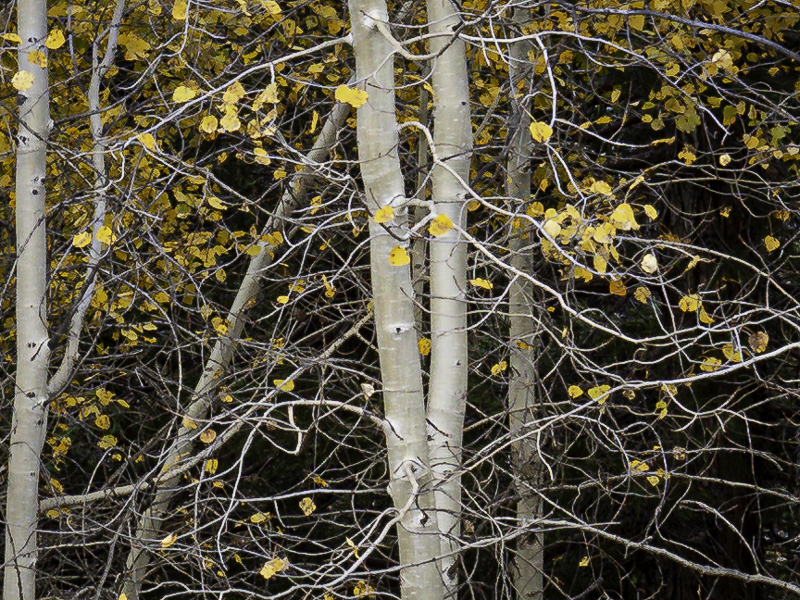Every Picture Is a Compromise
Lessons from the Also-rans
Most photography websites show the photographer's very best work. Wonderful. But that's not the full story of a creative life. If we want to learn, we'd better pay attention to the images that aren't "greatest hits" and see what lessons they have to offer. Every picture is a compromise — the sum of its parts, optical, technical, visual, emotional, and even cosmic – well, maybe not cosmic, but sometimes spiritual. Success on all fronts is rare. It's ok to learn from those that are not our best.
This is a series about my also-rans, some of which I've been able to improve at bit (i.e., "best effort"), none of which I would consider my best. With each there are lessons worth sharing, so I will.
Original digital captureAn interesting test image:Aspen grove provided a test subject for multi-exposure, high resolution mode. What I learned:I shot this twice, both times on a solid tripod. The image above is the full scene captured at the native resolution of my Panasonic G9 camera (20 megapixels). It's a perfectly acceptable image for making up to a 20" print. Nice and sharp. The top image at left shows an extreme crop (17% of the original image) of the above. Looks pretty good for pixel peeping. Compare, however, to the same crop area in the image at left, below. This was shot exactly as the above but employing the multi-shot high resolution mode. It's an 80 megapixel image cropped to make the same visual as the one above it. It works! The interpreted image below has more detail and less pixelization on the edges. This really becomes visible if you click on each of them to see a larger view. It's even more visible in a print. Screen resolution on your computer of phone may diminish the difference you see here. High resolution modeI don't think I'll use this technology on all my images because it simply isn't necessary. When I do, however, foresee a need for more resolution in a giant sized print, I will certainly not hesitate to flip over into high-resolution mode and take advantage of this interesting technology. Is the difference huge? Maybe not, but it is enough to be worth the effort. |


